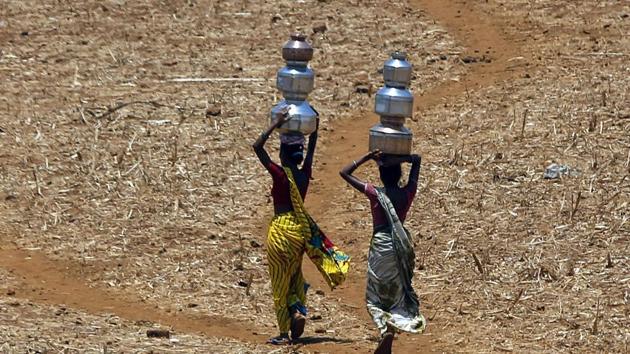60% districts in India cannot stand drought, says study
The IIT study prepared a high resolution ecosystem resilience map of India from 2000 to 2014 and found that only 241 of the 634 districts, or 38%, were resilient to droughts.
Three out of every five districts in India are not prepared for a drought, says a study by the Indian Institutes of Technology at Indore (IIT-I) and Guwahati (IIT-G), highlighting the need for effective agriculture and water management.

Using data based on remote sensing from National Aeronautics and Space Administration (NASA)’s Moderate Resolution Imaging Spectroradiometer sensor, the two members prepared a high resolution ecosystem resilience map of India from 2000 to 2014 and found that only 241 of the 634 districts, or 38%, were resilient to droughts.
The study considered daily rainfall records from 6,955 rain gauge stations across India from 1901 to 2015 by the India Meteorological Department (IMD).
During the study period, 68% of the area was unable to support vegetation in a drought year. Of the 30 states and Union territories considered for the analysis, only 10 showed more than 50% resilience. While Rajasthan and Chhattisgarh had no resilient district, all four districts in Sikkim were found resilient. A resilient ecosystem can absorb hydro-climatic disturbances such as drought by increasing or maintaining its efficiency to use water that helps in sustaining its productivity.
The study ‘District-level assessment of ecohydrological resilience to hydroclimatic disturbances and its controlling factors in India’ was published in the Journal of Hydrology on July 31.
A 2017 IIT-G study by the same team found that only one out of four river basins in India – or six of 22 river basins – can support crops and vegetation during drought. “Terrestrial ecosystems pl- ay a very important role in supporting human life on earth. The productivity of an ecosystem is linked to crop production and food security,” said Manish Kumar Goyal, lead investigator and associate professor, civil engineering, IIT-I. “If the ecosystem is unable to maintain its productivity during drought, it may lead to a serious threat to food security.”
Researchers said the findings are important for effective ecosystem management policies in the backdrop of an increase in the frequency of droughts and heat waves in different parts of the country due to changing climate.
A 2016 study co-authored by the Indian Institutes of Technology at Gandhinagar and Kanpur found that the severity and frequency of droughts have not only increased in the recent decades but also shifted towards the Indo-Gangetic area, central Maharashtra and coastal south-India plains that are important for agriculture. A 2014 analysis by the India Meteorological Department, Pune, revealed that 57 of 103 weather stations recorded heat waves from March to July.
“It is therefore important to know the parts of the country where ecosystems are capable or not capable of withstanding droughts. Identifying such hotspots will help in preparing effective ecosystem management policies, and improve resilience in less resilient regions,” said Kumar, adding their next research that will study resilience at block and village levels.
Though croplands cover more than 50% area in India, only 35% were found resilient.
The study found more than 50% districts with large forest cover of more than 40% to be resilient. Around 65% districts with less than 20% forest cover were non-resilient.
Most districts in forest dominated area in northeast and north India were either resilient or slightly non-resilient. The arid or semi-arid regions in the west and parts of eastern states are non-resilient. States in the lower Himalayan regions had higher resilient areas such as Sikkim (100%), Punjab (88.11%), Haryana (76.02%), Uttarakhand (75.26%), Himachal Pradesh (73.19%), and Arunachal Pradesh (64.04%).
In the south, Tamil Nadu (56.74%) was the most resilient followed by Andhra Pradesh (53.43%) and Telangana (48.61%), while Karnataka at 17.38% and Kerala at 19.13% had the minimum percentage of resilient area. Among north-eastern states, Assam at 20.72% had the lowest percentage of resilient area.
Compared to districts with tropical and dry climate, 48% districts with a temperate climate showed 42% resilience during drought. “This study provides spatial information about terrestrial ecosystem’s response to hydroclimatic disturbances and will be beneficial for ecosystem management and policymaking,” said the paper co-authored by Ashutosh Sharma, IIT-G.
“The study should emphatically be included in policy-making. However for policymakers to rely confidently on adapting the methodology, the parameters used in the study should be validated across all the agro-climatic zones of India,” said Sat Kumar Tomer, chief executive officer, Satyukt Analyticshas that has developed state-of-the-art algorithms to estimate agro-hydrological variables using all-weather satellite data in real time.






